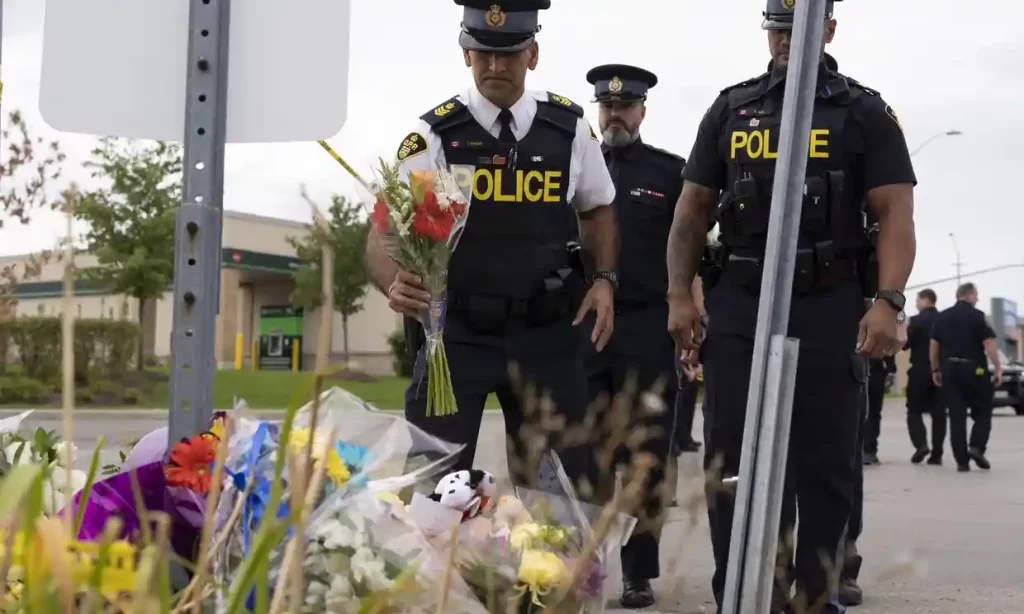Moral Injuries – Trying to Make Sense After Loss
On 04 January 2023, another Police Officer, Constable Grzegorz Pierzchala, was laid to rest. The rising deaths of Police Officers on duty do not harden them, nor can it be simply concluded by chains of command or common citizens that this is “just part of the job.” When we cannot make sense of loss, it further exacerbates the violations of death and damages morale. Moral injuries can shatter fundamental, identity-defining beliefs about service and why we serve. When we have difficulty assimilating events that strongly transgress expectations and violate deeply held beliefs and values, these interpretations of the world, others, and ourselves may become dismantled and destructive.
–When we cannot make sense of loss, it further exacerbates the violations of death and damages morale. Moral injuries can shatter fundamental, identity-defining beliefs about service and why we serve.

Moral Injuries – Misalignments of Morals
The way we understand our experiences is strongly influenced by the moral fibres that construct our definitions of service. These are part of a collective consciousness we belong to as First Responders or still feel tied to as Veterans because these shared beliefs and values necessarily become part of our identity in and out of uniform.
These injuries may be the result of having acted in a way that violates these morals or perhaps witnessing others. For example, actions or inactions by a chain of command may undermine trust in leadership and loyalty. Whether intentional or not, these betrayals violate a sense of belonging and may cause some to question the definitions of their service. Trust is foundational to morale and discipline.
–The way we understand our experiences is strongly influenced by the moral fibres that construct our definitions of service.
Law and Leadership
Although Officers do not dictate the laws, it is their boots on the ground that place service to it before self. Officers need to trust that the letter and spirit of the law protect the public just as much as themselves. When this is not the case, it harms morale by confusing definitions of service. For example, hasty bail releases of violent, repeat offenders facing multiple charges cause many Officers to question where the court is placing public safety and whether it is working contrary to their efforts.
However, perhaps more concerning is when the chain of command offers an impression that it is working in cross-purposes with duty and violates trust among those they command. For example, in released messages following the April 2020 mass shootings in Nova Scotia, Superintendent Robert Doyle and Employee and Management Relations Officer, Kelly Sullivan, described members of the Emergency Response Team (ERT) as “wanting to circle-jerk for two weeks” after they requested an opportunity to decompress. Even in reference to wives of ERT members who wrote to the provincial justice minister, Doyle described it as creating a “shit show.” It is also important to remind readers that of the 22 murdered, Constable Heidi Stevenson was among them, which only compounded the severity of the losses suffered by Officers.
–When faith in doctrine or trust in leadership is questioned, they can become evaluated as threats no less dangerous as exposure to the elements or an active shooter.
Doyle was one of the highest-ranking Officers in Nova Scotia who also ironically oversaw Officer wellness, while Kelly was meant to advance mental health awareness and encourage Officers to seek help. The fact that these messages were released is not what is most important. What demands attention is the implications senior leadership can have on the definitions and redefinitions of beliefs and values on subordinates through explicit and implicit behaviours. Violations of trust lead to confusion and disorientation. When faith in doctrine or trust in leadership is questioned, they can become evaluated as threats no less dangerous than exposure to the elements or an active shooter.
Course Correcting
–We need to ask ourselves what the rise in violent Police deaths on duty tells us about the places we wish to call home.
The responsibilities entrusted to our Officers demand a high level of accountability, both horizontally between officers and vertically in the chain of command. The letter and spirit of the law must also protect those with boots on the ground who serve it. Joint statements between Police Associations about conducting reviews and research of existing public safety and judicial systems to identify best practices may be a step in the right direction. Of course, this can only be evaluated once words are put into action. However, the public as a collective is also accountable. We need to ask ourselves what the rise in violent Police deaths on duty tells us about the places we wish to call home. We are all part of this solution, just as much as we can be part of the problem.
To learn more about Moral Injuries and their effects on First Responders and Veterans, book a Free 15-min Discovery Call with Richard Piekarckz-Vacca.